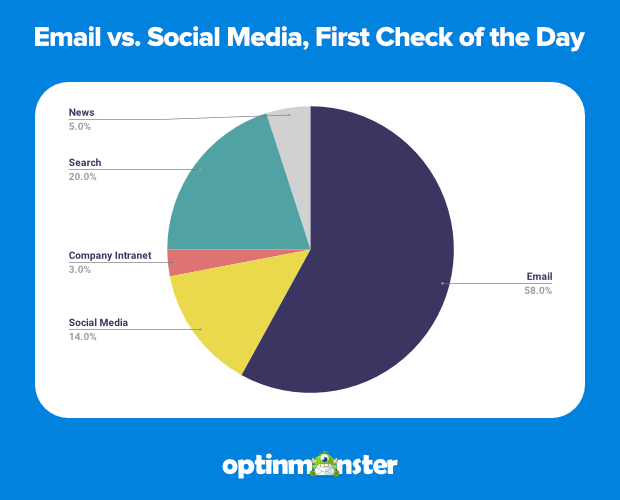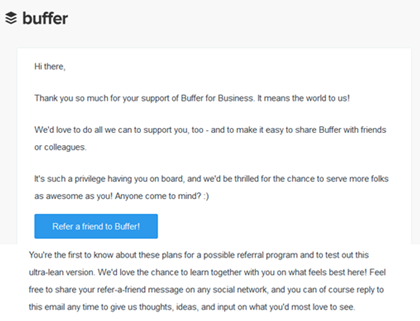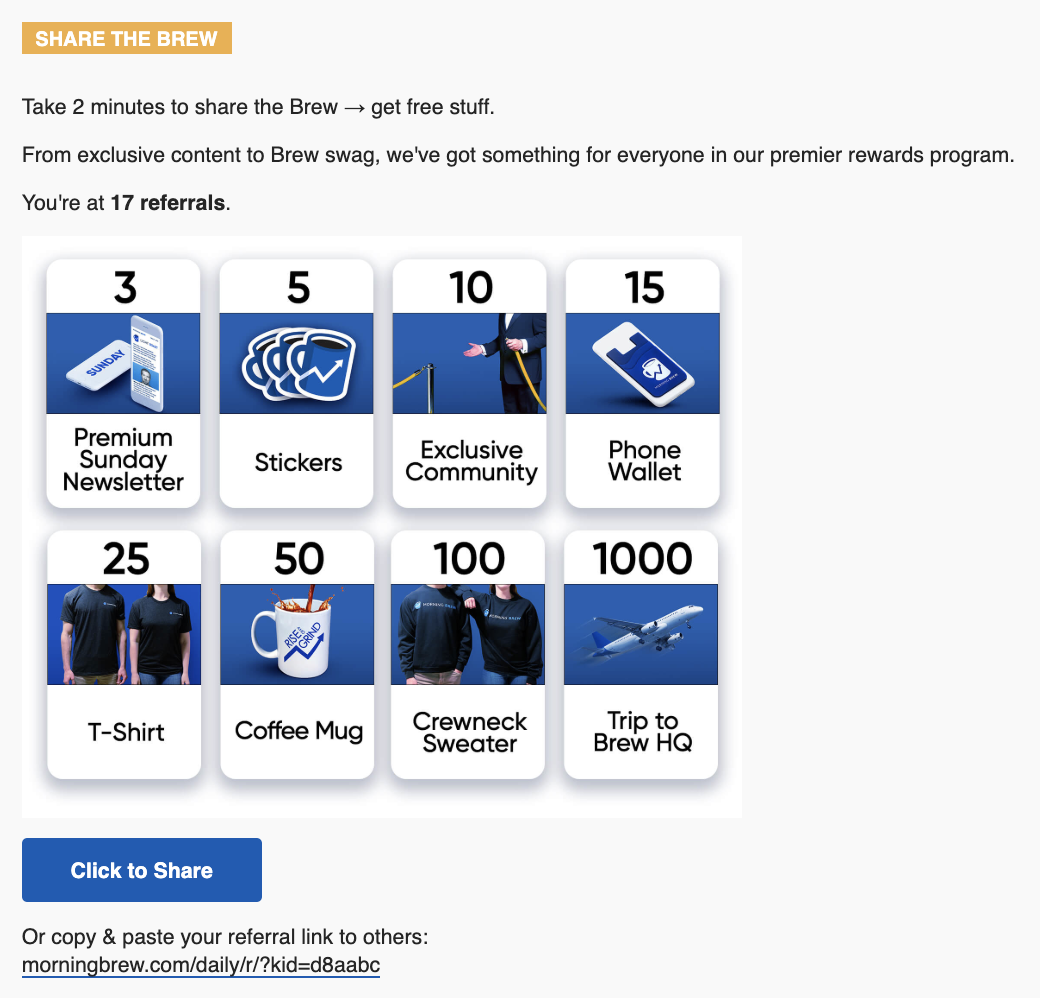Writing emails can feel overwhelming sometimes, especially when you’re asking for referrals.
Whether you’re sending promotions or writing business messages, that blank screen creates anxiety, and it gets even harder when you need to ask your customers or colleagues for referrals.
Your email writing faces unique challenges in today’s busy world.
Crowded inboxes fight for attention while people scroll through countless messages daily, and your referral emails face extra hurdles since they need to build trust and create motivation at the same time.
Modern referral strategies have changed a lot from traditional word-of-mouth marketing.
Today, you can use organized email campaigns to grow your network step by step, and these targeted messages can bring you new customers, attract great talent, or make your professional relationships stronger.
Good referral emails combine several important parts that work well together. The right tone gets attention while clear messages show value effectively, and smart timing ensures maximum impact when people feel most ready to help you.
Learning how to write referral email content well means looking at basic copywriting rules first. Strong subject lines get your emails opened, interesting content drives action, and clear calls-to-action get results.
These basics work everywhere, but your referral emails need special approaches that deal with unique psychological factors.
Let’s look at why spending time on well-written referral emails brings real business results for you.
Key Takeaways
- Referral email subject lines determine everything—get them right or lose 70% of your potential referrals. A good subject line with clear benefits can make the difference between a successful campaign and wasted effort.
- Timing your referral requests smartly can double your success rates compared to random sending. Asking for referrals when customers are frustrated kills relationships, but asking during happy moments creates win-win situations.
- The best businesses add referral requests into natural points like after-purchase emails and positive customer service talks.
- Clear reward structures with transparent conditions build trust that drives long-term referral success. Vague promises about referral bonuses create confusion and doubt that reduces participation rates significantly.
- Specific details about earning requirements, timeframes, and referral rewards help people understand exactly what they gain from helping your business.
- Personalization and authentic tone matter more than perfect design for referral email effectiveness. People can spot generic mass emails immediately, but personalized messages that match your brand voice create meaningful connections.
- Loyal customers respond better to genuine requests that acknowledge their relationship with your company than polished promotional content. Multiple sharing options increase referral rates by accommodating different user preferences and expanding reach.
- Offering referral links, social media integration, and direct contact options maximizes participation instead of providing only email sharing across your customer base.
Why Spend Time to Write a Referral Email?
Email remains the top channel for introducing your referral programs across industries.
You can recognize email’s effectiveness in reaching targeted audiences with personalized messages, and this approach works particularly well for online stores but extends successfully to service-based businesses too.
The numbers supporting email’s dominance are compelling for your business.
Nearly all consumers check their email daily, creating consistent touchpoints for you, and this high engagement rate makes email an invaluable tool for your referral campaigns seeking maximum reach.

Here are five strong reasons that justify putting effort into crafting quality referral emails for your business:
- People expect email promotions regularly. Consumer behavior shows strong acceptance of promotional emails when they provide real value, and recipients actively look for deals and new opportunities in their inboxes daily.
- Emails prove harder to ignore than advertisements. Unlike social media ads that users scroll past quickly, emails demand active decisions. Recipients must either open the message or delete it, giving brands guaranteed consideration.
- Personalization opportunities abound in email marketing. Advanced segmentation (dividing your audience into groups) allows businesses to tailor messages based on purchase history and preferences. This targeted approach significantly increases engagement rates compared to generic communications.
- Cost-effectiveness makes email attractive for businesses of all sizes. Email marketing delivers exceptional return on investment with minimal overhead costs. Small businesses can compete effectively with larger companies using well-crafted email strategies that save time and resources.
- Performance measurement provides actionable insights for optimization. Email platforms offer detailed analytics showing open rates, click-through rates, and conversion data. This information enables continuous improvement of referral campaigns over time.
Email’s unique position in digital marketing creates opportunities that other channels cannot match for you.
Your recipients view their inboxes as personal spaces where trusted communications appear, and this intimate setting makes your referral requests feel more genuine and less intrusive than other promotional methods.
The combination of high visibility, forced engagement, and measurable results explains email’s continued effectiveness for your business.
When you leverage these advantages, you can build systematic referral programs that generate consistent growth.
How to Write in the Right Tone
Your brand voice shapes how customers see and remember your company.
Two similar businesses can create completely different reactions based solely on communication style, and this becomes crucial when you’re requesting referrals since tone influences trust and willingness to help.
Think about how different people show their personalities through conversation.
Some sound professional and formal while others appear casual and friendly, and your brand faces identical choices when developing communication strategies for referral campaigns.
Creating the right tone requires strategic planning across multiple areas for your business.
You must balance authenticity with professionalism while maintaining consistency throughout customer interactions.
Here’s how you can establish an effective brand voice for your referral emails:
- Define your brand’s distinctive voice clearly. You need recognizable communication patterns that reflect your core values and personality traits.
- Ensure alignment with your products and target customers. Your tone must match what you sell and who buys it.
- Maintain consistency across all your marketing assets. Your referral emails should sound like they come from the same company as your website copy.
- Avoid overcomplicating your messages with excessive cleverness. While creative wordplay can be entertaining, it sometimes disrupts natural communication flow for your audience.
When you study successful examples, you can understand tone implementation in practice.
Companies that align their voice with customer expectations create stronger emotional connections, and this emotional connection makes your referral requests feel like helpful suggestions rather than sales pitches.
Building familiarity and trust over time through repeated positive interactions is key for your success.
When your customers recognize and appreciate your communication style, they become more receptive to referral opportunities that can make all the difference.
Many brands are totally killing it with voice, tone & style, but one of the best is Cards Against Humanity. Just look at this hilarious email.

Killer Subject Lines for Referral Emails
Your subject lines make or break referral email campaigns before recipients even open messages.
These few words determine whether your carefully crafted content gets read or deleted immediately, and strong subject lines cut through inbox clutter to grab attention that drives engagement.
The importance of compelling subject lines cannot be overstated in today’s competitive email environment for your business. Poor subject lines reduce your open rates dramatically, meaning fewer people see your referral offers.
Your clear subject line creates curiosity while communicating value immediately to recipients.
The best referral email subject line examples demonstrate how brevity and clarity work together effectively, and you should understand that subject lines create the first impression that determines your email success.
An engaging subject line serves as the gateway to your referral program, often making the difference between your successful campaign and one that gets ignored.
When you’re crafting these critical elements, consider how they address your recipient’s pain points while highlighting mutual benefits.
Creating effective subject lines requires you to follow proven best practices that maximize visibility and engagement:
- Keep your subject line length between three and seven words maximum. Mobile devices display limited characters, making brevity essential for complete visibility across all platforms.
- Communicate your referral purpose immediately and clearly. Your recipients should understand they’re being offered referral opportunities without opening the email first through transparent messaging.
- Consider adding visual elements for increased appeal while maintaining professionalism. Strategic visual enhancements can boost your open rates by making subject lines stand out in busy email environments.
Testing different approaches reveals what resonates best with specific audiences while maintaining brand consistency across all communications.
Modern referral email subject examples demonstrate these principles effectively in practice.
- “Give $20, get $20” communicates value proposition clearly while staying mobile-friendly.
- “Invite friends, get 10% discount” combines visual appeal with specific benefit information that sparks curiosity.
Performance data shows significant variation in subject line effectiveness across different approaches for your business.
Messages with clear incentives typically generate higher open rates than vague promotional language, and numbers and specific offers create immediate understanding of potential value for your recipients.

Mobile optimization becomes increasingly critical as smartphone usage dominates email consumption patterns for your audience. Subject lines that work perfectly on desktop computers may appear incomplete on mobile devices, so testing across multiple screen sizes ensures consistent message delivery regardless of viewing platform.
Your compelling subject line adds urgency that encourages immediate action from recipients. Phrases like “limited time” or “expires soon” create fear of missing out while encouraging recipients to engage with your content.
Your Space is Limited, So Make Your Main Body Count
Your successful subject lines create expectations that email content must fulfill completely.
When recipients open your referral emails, they expect clear information about benefits and next steps.
Disappointing content leads to immediate deletion and reduces your future email engagement rates.
Your email design approaches fall into two primary categories with distinct advantages.
Text-only emails feel personal and direct, similar to messages from friends or colleagues, while visual emails with graphics and styling appear more professional but risk seeming overly promotional to your audience.
Buffer used a text-only email asking for referrals. It’s a simple and quick solution.


Simple text-based referral emails work effectively for many businesses seeking authentic communication. These messages focus entirely on content without visual distractions that might reduce credibility for your brand.
Your recipients often perceive text emails as more genuine than heavily designed alternatives.
Alternatively, you can use visually enhanced emails to communicate complex information more effectively through strategic design elements.
Webflow took a step further and added an image and some styling to their referral emails.

Professional graphics reinforce your brand identity while clear layouts guide readers through your referral process.
The key involves balancing visual appeal with functional clarity throughout your message.
Successful referral email examples demonstrate various approaches to content organization and presentation that you can use.
Some companies emphasize simplicity with straightforward benefit explanations and single call-to-action buttons, while others create comprehensive experiences featuring multiple sharing options and detailed referral reward structures.
Multi-tiered reward systems (programs with different levels of rewards) or Milestone referral programs require careful explanation to avoid confusing your recipients about earning potential.
Clear progression charts show exactly what actions produce specific rewards at each level, and this transparency builds trust and motivates participation in your referral programs.
If your referral campaign offers multi-tiered rewards, like Harry’s did to gather 100K emails, you should definitely check Equal Parts’ referral email.

Advanced referral campaigns offer multiple sharing methods to accommodate different user preferences and behaviors for your audience.
Direct referral link sharing works well for personal networks while social media integration reaches broader audiences, and providing various options increases your overall participation rates significantly.
Here are strategic guidelines for creating effective referral email content that ensures clarity and motivation for your recipients:
- Craft messages that communicate your value propositions clearly and concisely.
Every sentence should contribute to understanding or motivation without unnecessary complexity, and your recipients should immediately grasp what they gain from participating in referral programs while encouraging them to take the next step.
- Present your reward structures transparently with specific details about earning requirements.
Vague promises reduce trust while clear explanations build confidence in your referral programs. You should include exact amounts, timeframes, and conditions for receiving rewards, because a clear incentive structure helps establish trust with your audience.
- Include detailed conditions explaining when and how people receive referral bonuses.
Being upfront about requirements prevents disappointment and builds long-term trust with your participants. Clear guidelines help people understand exactly what actions qualify for referral bonuses and what mutual connection benefits exist for them.
- Add unique sharing URLs that track individual referral performance accurately.
Personalized links ensure proper credit attribution while providing valuable analytics data for your business. These links should be easy to copy and share across multiple platforms, and you might consider including the contact name of a representative who can answer questions about your referral process.
- When telling your customers about your referral program, consider using viral loops as a powerful referral marketing tool.
Viral loops integrate with most popular email marketing and CRM platforms (customer relationship management systems).
You can easily add them through referral codes, referral links, or even HTML code for widgets to be added to your email in case you are using a lesser-known email marketing tool.
This creates a self-perpetuating cycle where each new customer potentially brings in multiple additional customers for your business.
- Insert multiple strategic calls-to-action that capture desired user behaviors.
Single buttons limit engagement opportunities while multiple options accommodate different preferences for your audience.
Strategic placement throughout your emails increases chances of user interaction and encourages recipients to take action, and you might consider adding phrases like “best regards” in your closing to maintain professionalism while keeping the tone friendly.
Quality content delivery requires strategic organization that guides your readers toward desired actions naturally.
The most effective referral emails tell compelling stories about mutual benefits while providing clear pathways for participation, and they grab your recipient’s attention from the opening line and maintain engagement throughout.
Understanding what to say is important, but knowing when to say it can be equally crucial for your success.
Know When to Ask for Referrals
“Actions fall into place because of universal timing and when combined with synchronicity, bring those events into your awareness to seize your attention.” – Tony Fahkry.
Your timing determines referral request success as much as message quality and design elements.
Poorly timed requests can damage your customer relationships even when content is well-crafted, but strategic timing leverages positive emotions and satisfaction peaks for maximum effectiveness.
Understanding your customer emotional states helps you identify optimal referral request moments throughout their journey.
Happy customers feel more generous and willing to help businesses they appreciate, while frustrated or dissatisfied customers will likely ignore or resent your referral requests regardless of offered incentives.
Integrate your referral requests during natural satisfaction peaks when customers feel most positive about their experiences.
Post-purchase thank you emails provide excellent opportunities since customers just completed desired actions, and newsletter welcome messages capture enthusiasm from new subscribers who actively chose to engage with your business.
You can identify multiple touchpoints where referral requests feel natural rather than intrusive or opportunistic.
This moment could be when they subscribe to your newsletter as Morning Brew did by adding a referral section at the bottom of their welcome email (as in all of their emails.)

Customer service resolution emails work well after positive problem-solving experiences that address pain points effectively, and product delivery confirmations capitalize on excitement about receiving anticipated purchases.
Seasonal timing considerations can significantly impact your referral campaign performance across different industries and customer segments.
Holiday periods often generate increased sharing behavior as people seek gift ideas and new opportunities to help friends and family with great products or services.
You should consider timing your outreach when recipients are most likely to have time to refer a friend.
Avoid busy periods like Monday mornings or Friday afternoons when people are focused on other priorities, because mid-week timing often yields better response rates for your referral campaigns.
Avoid requesting referrals during stressful periods or negative customer experiences that might create resentment toward your brand. Technical difficulties, billing problems, or service interruptions represent poor timing for your referral campaigns.
You should wait for resolution and renewed satisfaction before making referral requests.
Perfect timing transforms your referral emails from intrusive sales pitches into helpful opportunities that customers appreciate receiving.
This strategic approach builds stronger relationships while generating more successful referral outcomes over time for your business.
Before You Go
Writing exceptional referral emails combines art and science through strategically implementing proven principles for your success.
You need to master multiple elements simultaneously rather than focusing on individual components, and the most effective campaigns integrate compelling subject lines, authentic tone, clear messaging, and strategic timing.
Testing different approaches reveals what resonates best with your specific audiences and business models.
Your subject line variations, call-to-action placement, and reward structures all impact performance differently across industries, and regular experimentation leads to continuous improvement and better results over time.
Remember that your referral email effectiveness depends on delivering genuine value to recipients rather than purely promotional messaging.
Your loyal customers appreciate honest recommendations and transparent reward structures that benefit everyone involved, and this authentic approach creates win-win situations and builds long-term relationships that generate sustained referral activity.
You should focus on consistency across tone, messaging, and timing for maximum impact.
Test various elements systematically to identify optimal combinations for your audience, and prioritize recipient value over promotional objectives to build lasting trust and engagement that grabs attention effectively.
Start implementing these strategies today to transform your referral emails into powerful growth engines that help you capture more leads!
FAQs
How do you write a referral email?
You should start with a clear subject line that mentions the referral benefit, then explain your relationship with the recipient and why you’re reaching out.
Include specific details about your referral program rewards and provide easy-to-use referral links or codes for sharing with their network.
How do you write a good referral message?
Keep it concise while covering essential points: your appreciation for their business, the mutual benefits of referring friends, and clear instructions on how to participate.
You should use genuine, personal language that reflects your brand voice and makes the recipient feel valued.
Don’t forget to mention key details that address the recipient’s attention to what makes your program special.
How do you ask for referrals via email?
You need to choose the right timing when customers are satisfied, personalize the message based on their relationship with your business, and clearly communicate what’s in it for them.
Make your referral process as simple as possible with direct links and clear reward structures, and consider addressing any pain points your customers might have about participating in referral programs.
What is a good referral email subject line?
You should use clear, specific language that immediately communicates the benefit, such as “Give $20, Get $20 – Share with Friends” or “Earn Rewards for Every Friend You Refer.”
Keep it under 50 characters for mobile optimization while highlighting your value proposition, and an engaging subject line should create immediate interest and curiosity for your recipients.
How do I mention a referral program in an email?
You can introduce the program naturally within your regular communications, explain the benefits clearly, and provide specific examples of how it works.
Focus on the mutual value—what the referrer gains and how their friends will benefit from your products or services, and consider how your affiliate program integrates with other marketing efforts.
What is an example of a referral email?
“Hi [Name], Thanks for being such a valued customer! We’d love to share our [product/service] with your friends, too. For every friend you refer who makes a purchase, you’ll both get $20 off your next order.
Simply share your unique link: [referral link]. It’s our way of saying thanks for spreading the word about what we do!
Best regards, [Your Company Name]”
